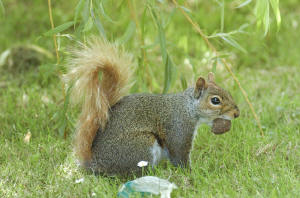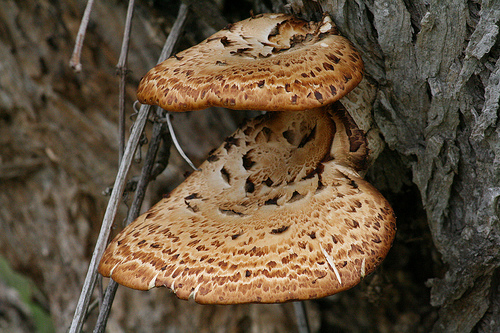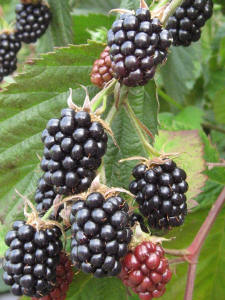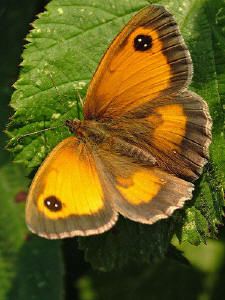Article
Wildlife Photography
in August
|
 |
The early part of the month is often the time to see grey squirrels
chasing each other through the branches.
They are impatient to start harvesting nuts
but these are not ready so you will see them breaking open unripe nuts to
see if anything edible is yet inside, and keen to make sure no other
squirrels discover the best points before them.
They often chatter and squeal to each
other, sometimes quarrelling and either from a quarrel or just for fun or
excitement a chase through the branches develops.


|
In the later evening bats are out and about, many snapping up insects
still flying around. Often found over water of damper areas. In some
cases gently fluttering a paper tissue or thin scarf will cause them to be
curious enough to come and fly closer to you to see what you are and what
you are
doing, they will never fly into you.
 |
In woodland with dead
sycamore, beech, elm and ash trees look out for what is said to be the
seat of the woodland fairies or dryad, the wood nymphs in classical
mythology.
It has a yellowish upper surface with
light brown scales and is white underneath. The brackets can reach a
size of up to half a metre across. It smells like aniseed.
Dryad's Saddle is a fairly common
fungus, and parasite of dead trees.
Dryad's Saddle image on Flickr

 |
.
.
| Berries are now starting to ripen and through the month more are
noticeable, they include blackberries, blueberries, sloes, hips, haws
and elderberries as well as many others. Interesting in their own right, but
often a magnet for birds and small mammals, some get stripped bare quickly,
while others will be a regular supply through the autumn.
Most birds have now finished laying or sitting on eggs but often the wood
pigeon will be getting an extra brood started in August. House sparrows,
starlings and jackdaws will still have young being fed in their nests. House
Martins will be leaving the nest, but if the weather is colder may return to
them to roost at night. Swallows can be seen lining up on telephone and other
wires. Martins, swallows and swifts can be seen darting around the fields,
but by the end of the month the majority of the swifts will have left, but
most other migrating birds are still around, although some perhaps now
starting to gather into groups. Sand martins for example will muster in
flocks as they prepare to journey south. After breeding in the northern wetlands, waders
return home to river estuaries or continue their migration. Lapwings and golden
plovers join knots and bar-tailed godwits feeding on the mud. Coastal birds
are visible and often noisy, Tern chicks screech in their coastal
colonies and Manx Shearwaters glide in to sea cliffs in the Irish Sea
and Bristol Channel.
|

 Blackberries Blackberries
Flickr 

|
Kingfisher broods have now left the nests
and started to spread out to find a patch of their own, so watch out even
where you have never seen kingfishers before.
Along the coast in rock pools you can
discover visits from crabs, shellfish, sea anemones and maybe lobsters, as
the tide goes out you are also likely to find stranded jellyfish on the
beach.
| There are a lot of butterflies around
in August, and different locations, and landscape types will have a
range of different collections. These may include Purple Hairstreak, purple emperor, white admiral, silver-washed fritillary,
meadow brown, small skipper butterflies and large whites. Gatekeepers
are particularly attractive orange and brown butterflies that can be
often found near hedgerows. You should also look out for cinnabar moth
caterpillars with their bright gold and black stripes feeding on ragworts or groundsel in the hedgerows.
Grasshoppers are still very active, the
ones you are most likely to see being common green, common field and the
meadow grasshopper. Dragonflies and damselflies will also be around lakes,
ponds and other water features.
Less pleasant may be the swarms of
black flying ants that all appear at the same time, these are all
females, and after a flight often caught and given a lift by the wind
will land, bite off their own wings and set about starting a new ants
nest.
At this point, the height of summer, you
can walk through the hay meadows, see a wide range of wild flowers and
get the full scent of summer. In Moorland areas you can find the purple
heather in full bloom. |

 Gatekeeper
Gatekeeper
 Flickr
Flickr
 |
|
Share your wildlife
photos
Let us expand our coverage of what can
be photographed each month by including your photos. - Why not
Contact Us. |
More Information
See also the
Nature and Wildlife calendar - August

Other species can be found listed in the
Wildlife and Animals
 section of the Topic Index and plants within the
Nature, Flora and Countryside
section of the Topic Index and plants within the
Nature, Flora and Countryside
 section, more lists may be found from the
Wildlife & Nature
section, more lists may be found from the
Wildlife & Nature
 index page within the reference section. These lists also give you links
to other websites allowing you more information on what we have and
haven't yet covered.
index page within the reference section. These lists also give you links
to other websites allowing you more information on what we have and
haven't yet covered.
|